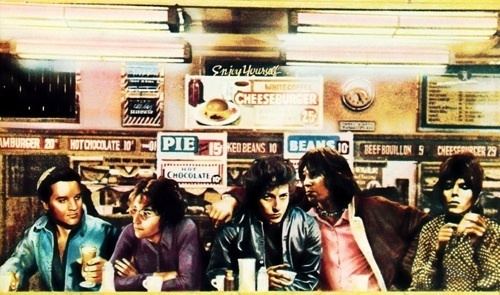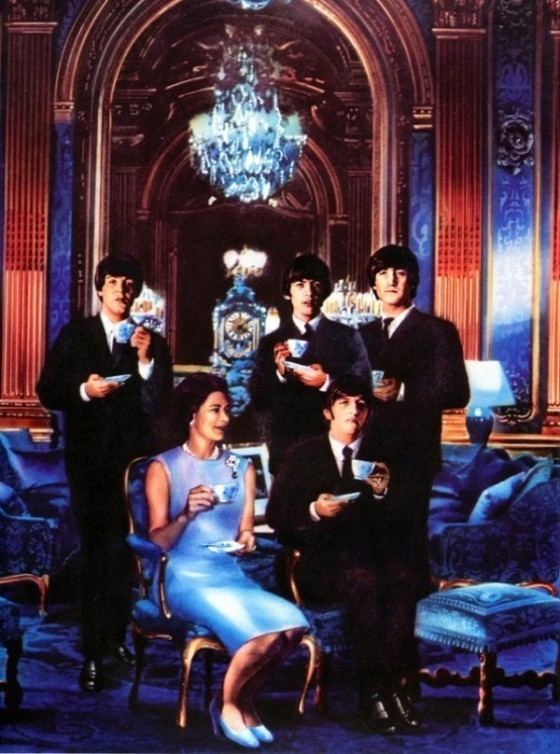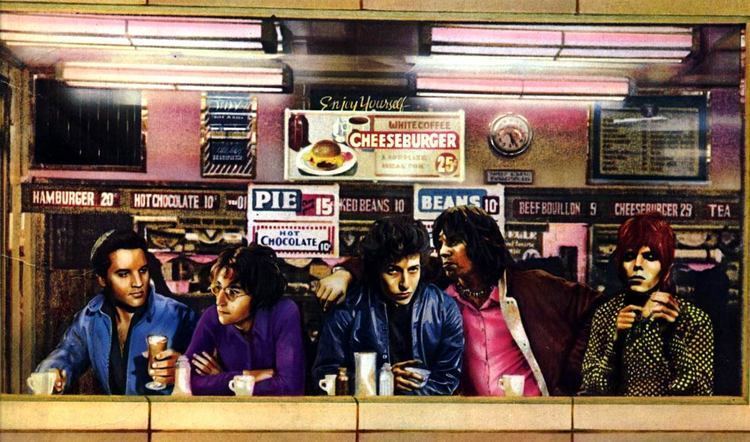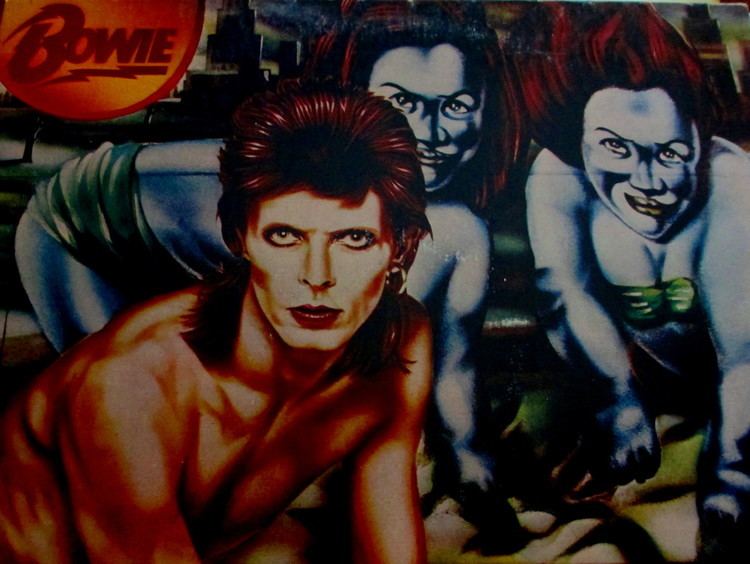Name Guy Peellaert | Role Artist | |
 | ||
Books Rock dreams, Rock Dreams. Bye bye, bye baby, bye bye Similar Nik Cohn, David Bowie, Étienne Daho | ||
The adventures of jodelle by guy peellaert pierre bartier video preview
Guy Peellaert (6 April 1934 – 17 November 2008) was a Belgian artist, painter, illustrator, comic artist and photographer, most famous for the book Rock Dreams, and his album covers for rock artists like David Bowie (Diamond Dogs) and The Rolling Stones (It's Only Rock 'n' Roll). He also designed film posters for films like Taxi Driver, Paris, Texas, and Short Cuts. The band Frankie Goes to Hollywood took their name from Peellaert's painting, titled Frank Sinatra, which featured the headline "Frankie Goes Hollywood".
Contents
- The adventures of jodelle by guy peellaert pierre bartier video preview
- Les venusiennes fran oise hardy guy peellaert 1967
- Biography
- References

Les venusiennes fran oise hardy guy peellaert 1967
Biography

Peellaert was born into an aristocratic family, but left home at an early age. He studied fine arts in Brussels, and became heavily influenced by American and British pop culture, film noir and pulp literature, before making his debut as a decorator for theaters and comic strip artist.

His style was influenced by psychedelic art and Pop Art. He moved to Paris, where he worked variously in advertising, set design for the casino and the Crazy Horse nightclub, film and television. His comic strip, Les Aventures de Jodelle, was published in 1966 in the controversial French magazine Hara-Kiri. The protagonist, Jodelle, was modelled after singer Sylvie Vartan.

In 1973, he collaborated with British rock journalist Nik Cohn on the best-selling book Rock Dreams, which reportedly sold a million copies after it was published the following year. The book consisted of Peelaert's visual illustrations which celebrated and exaggerated the rebel heritage of pop music and, particularly, rock and roll, with commentary by Cohn. Many of the original artworks were bought by actor Jack Nicholson.

After the success of Rock Dreams, Peellaert became perhaps best known for his rock album covers. He designed covers for The Rolling Stones (It's Only Rock 'n' Roll), David Bowie (Diamond Dogs), Étienne Daho (Pour nos vies martiennes), Lio (Wandatta), and others.

He painted in a very photorealistic style and often used pastel. The album cover of David Bowie's Diamond Dogs (1974) met with controversy. The cover art features Bowie as a striking half-man, half-dog grotesque. It was controversial as the full painting clearly showed the hybrid’s genitalia. Very few copies of this original cover made their way into circulation at the time of the album's release. According to the record-collector publication Goldmine price guides, these albums have been among the most expensive record collectibles of all time, as high as thousands of US dollars for a single copy. The genitalia was quickly airbrushed out for the 1974 LP’s gatefold sleeve, although the original artwork (and another rejected cover featuring Bowie in a cordobes hat holding onto a ravenous dog) was included in subsequent Rykodisc/EMI re-issues.
Peellaert also designed film posters for films like Taxi Driver (by Martin Scorsese), Short Cuts (by Robert Altman), L'argent (by Robert Bresson), Paris, Texas and Wings of Desire (by Wim Wenders) He also designed programme titles for television shows on the French TV channel Antenne 2 in 1982.
Peellaert and Cohn collaborated again on 20th-Century Dreams in 1999, with illustrations of political and world historical figures.
His work has been exhibited internationally and magazines like Les Inrockuptibles, The Guardian and Vanity Fair have praised his work.
He died at the age of 74 of cancer.
